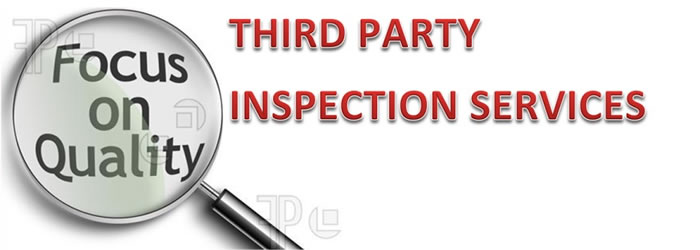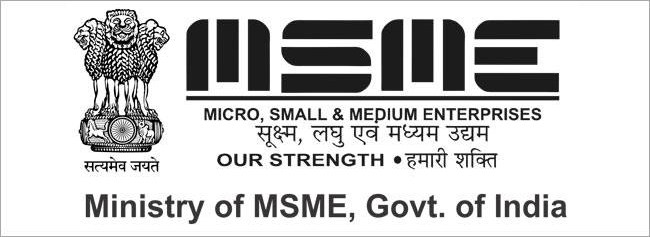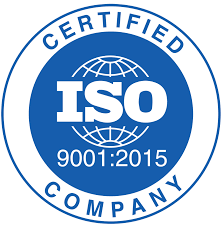Magnetic Particle Testing
Magnetic Particle Testing (Questions)
- Which of the following is not a property of magnetic lines of force?
(a) They form closed loops which do not cross
(b) The density increases with distance from the poles of a permanent magnet
(c) Hey are considered to have direction
(d) They seek paths of least magnetic resistance or least reluctance
- Surrounding an electromagnet, the magnetic field is strongest:
(a) Immediately after the current ceases to flow
(b) While the magnetizing current ceases to flow
(c) At the time the magnetic particles are applied to the part
(d) Just prior to current reversal
- The value of permeability is:
(a) A fixed value depending upon the type of material
(b) Between 1 and 100 for all ferromagnetic materials
(c) Between 0 and 10 for all ferromagnetic materials
(d) Dependent upon the amount of magnetizing force necessary to overcome
Saturation
- The flux density of the magnetism induced by a coil is affected by:
(a) The coil size
(b) The current in the coil
(c) The number of turns in the coil
(d) All of the above
- How many turns of a coil will be needed to establish a longitudinal field in a steel
shaft that is 22.86 cm (9 inches) long and 7.62 cm (3 inches) in diameter? 3000
amperes magnetizing current is available, it is desired to magnetize the part in
accordance with the formula NI = 45,000/(L/D):
(a) 1
(b) 3
(c) 5
(d) 7
- How many ampere-turns are required to magnetize a part that is 40.6 cm (16 inches)
long and 5 cm (2 inches) in diameter?
(a) 9000 ampere-turns
(b) 5625 ampere-turns
(c) 2812 ampere-turns
(d) None of the above
- The lines of flux or force in a circularly magnetized ferromagnetic bar:
(a) Are aligned through the piece from the south to the north pole
(b) Are aligned through the piece from the north to the south pole
(c) Leave the south pole and enter the north pole
(d) Are contained within and around the part
- In which magnetizing method is the current passed directly through the part, thereby
setting up a magnetic field at right angles to the current flow?
(a) Longitudinal magnetization
(b) Coil magnetization
(c) Central conductor magnetization
(d) None of the above
- Which of the following is false concerning a magnetic field in and around a hollow
conductor as compared to that of a solid conductor of the same outside diameter when
both are of the same magnetic material, and when the applied current is the same?
(a) The field immediately outside the outer surface of the hollow conductor is
greater
(b) The field gradient inside the hollow conductor is steeper
(c) The fields outside the conductors are the same
(d) The fields are the same at the centre
- The field in a section of ferromagnetic pipe being magnetized by means of a central
conductor is strongest at the:
(a) Ends of the pipe
(b) Outer surface of the pipe
(c) Inner surface of the pipe
(d) The field is uniform at all places
- For a 7.6 cm (3 inches) diameter bar how much current is needed to magnetize the bar
for the detection of longitudinal discontinuities:
(a) 5500 amperes
(b) 16500 amperes
(c) 1000 amperes
(d) 3000 amperes
- For detection of longitudinal discontinuities a 7.6 cm (3 inches) diameter bar is
magnetized in:
(a) The longitudinal direction
(b) The circular direction
(c) The clockwise direction
(d) None of the above directions
- A bar that is 5 cm (2 inches) by 10 cm (4 inches) by 30.5 cm (12 inches) is being
magnetized in the circular direction. About how many amperes are required using the
perimeter approach?
(a) 2200
(b) 4500
(c) 3800
(d) None of the above
- An advantage of AC is that:
(a) It is most readily available
(b) Equipment can be made lighter
(c) It leaves the part demagnetized
(d) All of the above
- When a magnetic field cuts across a crack:
(a) Electrons begin jumping back and forth across the crack
(b) The crack begins to heat up
(c) Magnetic poles form at the edges of the crack
(d) All of the above
- A disadvantage of AC current is that it:
(a) Cannot be used with dry powder
(b) Has poor penetrating power
(c) Can only provide low flux densities
(d) Cannot be used for residual magnetic particle testing
- What causes a leakage field in a steel bar?
(a) A crack
(b) Reversal of the magnetic field
(c) Paint on the surface
(d) All of the above
- An indication is a defect under which of the following conditions?
(a) If it is greater than 3.8 cm (1.5 inches) long
(b) If it exceeds the limits of a standard or specification
(c) If it is deep
(d) Under all of the above indications
- Paint will not affect the detection of a crack if:
(a) The paint is thick and the defect is subsurface
(b) The paint is thin and the crack is parallel to the direction of flux lines
(c) The crack is sharp and the paint is thin
(d) All of the above
- A magnetic particle indication is sharp and very fine; this suggests that the
discontinuity is:
(a) Subsurface seam
(b) A shallow, tight surface crack
(c) Porosity
(d) A deep crack
- Among the following, the best type of current for the detection of fatigue cracks is:
(a) Half-wave direct current
(b) Alternating current
(c) Direct current
(d) Half-wave alternating current
- Continuous magnetization provides the most sensitivity because:
(a) The magnetic particles are present while the part is being magnetized
(b) The magnetic field is greatest while the magnetizing current is on
(c) All of the above
(d) Neither of the above
- The sensitivity of magnetic particle testing is greatest when the discontinuity is:
(a) Parallel to the direction of the magnetic flux lines
(b) Perpendicular to the flow of the magnetizing current
(c) Perpendicular to the direction of the magnetic flux
(d) Perpendicular to the line between prods
- To provide reliability and reproducibility in magnetic particle testing, written
procedures should include:
(a) Location of the coil and current for each magnetization
(b) Requirements for ammeter calibration
(c) Type and concentration of the particles
(d) All of the above
- The magnetic particles are noticed to bunch in some fillet areas and stand on end on
the edge of a part being magnetized. These observations indicate that the:
(a) Particle concentration is too low
(b) Flux density is excessive
(c) Flux density is too low
(d) Magnetizing current should be changed form AC to DC
- Flux density is a measure of the number of magnetic flux lines perpendicular to an
area of cross-section. If a discontinuity is in the plane of the unit area, the strongest
magnetic article indication will be formed when the discontinuity is:
(a) Inclined at 45º to the flux lines
(b) Parallel to the flux lines
(c) 90º to the flux lines
(d) 135º to the flux lines
- Prods are being used to magnetize a weld area. When dry powder is dusted on the
surface, it is observed that there is no mobility of the particles. What is the most
probable reason for this observation?
(a) The magnetizing current is not high enough
(b) The flux density is too low
(c) DC is being used
(d) All of the above are possible reasons
- The current from portable high amperage units can be applied to the object using:
(a) Prods
(b) Cable coils
(c) Pre-wrapped coils
(d) All of the above
- How can parts be tested to determine if they have been adequately demagnetized?
(a) By bringing a suspended paper clip near the middle of the part
(b) By using a small horseshoe permanent magnet
(c) By using a small magnetometer held at a corner of the part
(d) By sprinkling some magnetic particles on the part
- The statement ‘magnetic particle testing can be applied to plated and painted parts’.
(a) May be true depending upon the thickness of the coating
(b) May be true if flux densities are increased to compensate for the coating
thickness
(c) Is true only for circular circumstances
(d) Both (a) and (b)
- A group of indications, some sharp and some broad and fuzzy, were found on an area
of a small forging. Demagnetization and re-inspection eliminated these indications.
What was the probable cause?
(a) Forging lap
(b) Magnetic writing
(c) Change in permeability
(d) Subsurface variation
- Magnetic particle testing is most likely to find subsurface discontinuities in:
(a) Soft steels with high permeability
(b) Soft steels with low permeability
(c) Hardened steels with low permeability
(d) Hardened steels with high permeability
- Which of the following is not an advantage of Magnetic Particle testing?
(a) Fast and simple to perform
(b) Can detect discontinuities filled with foreign material
(c) Most reliable for finding surface cracks in all types of material
(d) Works well through a thin coat of paint
- Which of the following does not represent a limitation of Magnetic Particle testing?
(a) The type of materials which may be effectively tested
(b) The directionality of the magnetic field
(c) The need for demagnetization
(d) The ability to detect discontinuities filled with foreign material
- The most effective NDT method for locating surface cracks in ferromagnetic materials
is:
(a) Ultrasonic testing
(b) Radiographic testing
(c) Magnetic particles testing
(d) Liquid penetrant testing
- A discontinuity which is produced during solidification of the molten metal is called:
(a) Inherent
(b) Processing
(c) Service
(d) None of the above
- Pipe would be classified as what type of discontinuity?
(a) Inherent
(b) Processing
(c) Service
(d) None of the above
- A seam would be classified as what type of discontinuity?
(a) Inherent
(b) Processing
(c) Service
(d) None of the above
- A lamination in steel plate would be classified as what type of discontinuity?
(a) Inherent
(b) Processing
(c) Service
(d) None of the above
- An internal rupture caused by working steel at improper temperatures is called a:
(a) Lap
(b) Cold shut
(c) Forging burst
(d) Slag inclusion
- Cracks which are caused by alternating stresses above a critical level are called:
(a) Stress corrosion cracks
(b) Cycling cracks
(c) Critical cracks
(d) Fatigue cracks
- Cracks which are caused by a combination of tensile stress and corrosion are called:
(a) Stress corrosion cracks
(b) Cycling cracks
(c) Critical cracks
(d) Fatigue cracks
- Which of the following are ferromagnetic materials?
(a) Aluminium, iron, copper
(b) Iron, copper, nickel
(c) Copper, aluminium, silver
(d) Iron, cobalt, nickel
- The reverse magnetising force necessary to remove a residual magnetic field from a
test piece after it has been magnetically saturated is called:
(a) Hysteresis
(b) Coercive force
(c) Demagnetising flux
(d) Reverse saturation
- Magnetic lines of force enter and leave a magnet at:
(a) Saturation
(b) L/D ratios of greater than 4 to 1
(c) Flux concentration points
(d) Poles
- The ease with which a magnetic field can be established in a test piece is called:
(a) Reluctance
(b) Retentivity
(c) Permeability
(d) Electromagnetism
- Opposition to establishment of a magnetic field in a test piece is called:
(a) Reluctance
(b) Retentivity
(c) Permeability
(d) Electromagnetism
- The ability of a material to remain magnetic after the magnetising force is removed is
called:
(a) Reluctance
(b) Retentivity
(c) Permeability
(d) Electromagnetism
- A magnetic field which is contained completely within the test piece is called a:
(a) Confined field
(b) Longitudinal field
(c) Circular field
(d) Saturated field
- Which of the following produces a circular field?
(a) Coil
(b) Head shot
(c) Yoke
(d) All of the above
2 d
3 a
4 d
5 c
6 b
7 d
8 d
9 c
10 c
11 d
12 b
13 c
14 d
15 c
16 b
17 a
18 b
19 c
20 b
21 b
22 c
23 c
24 d
25 b
26 c
27 d
28 d
29 c
30 a
31 b
32 a
33 c
34 d
36 a
37 a
38 b
40 c
41 d
42 a
43 d
44b
45 d
46 c
47 a
48 b
49 c
50 d
To know more details please click here










